
About Andrew Cusack
 Writer, web designer, etc.; born in New York; educated in Argentina, Scotland, and South Africa; now based in London.
Writer, web designer, etc.; born in New York; educated in Argentina, Scotland, and South Africa; now based in London. read more
News
Blogs
Reviews & Periodicals
Arts & Design
World
France
Mitteleuropa
Knickerbockers
Argentina
The Levant
Africa
Cape of Good Hope
Netherlands
Scandinavia
Québec
India
Muscovy
Germany
Academica
Our Holy Emperor
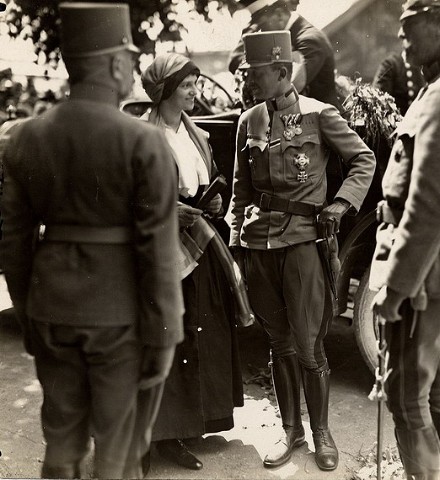
OCTOBER 21 IS the feast of Blessed Charles of Austria, the saintly emperor of that sacred realm whose life stands as an example of the price of sanctity. Charles worked tirelessly for peace both between the peoples of his own numerous realms and between all the nations, seeking to bring to an end the ceaseless and suicidal slaughter of the Great War, in the midst of which he had ascended to the throne of his fathers. A defender of social order, Charles reminds us of our many responsibilities to each other, even though the spirit of our current age would have us clamor only for our supposed rights. In the face of repeated betrayal and intense pressure, he refused to abdicate and so abandon his peoples to their fates, which were terrible indeed. That terrible cross he bore, the crown, was in fact a penitential grace, the sufferings he bore for the benefit of his – and indeed all – people. His reward was not in this world.
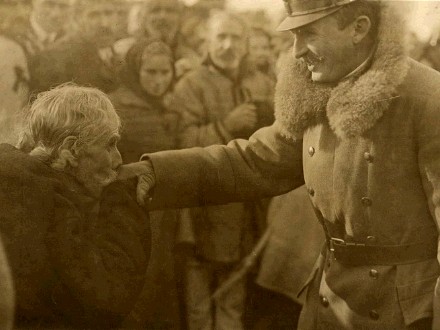
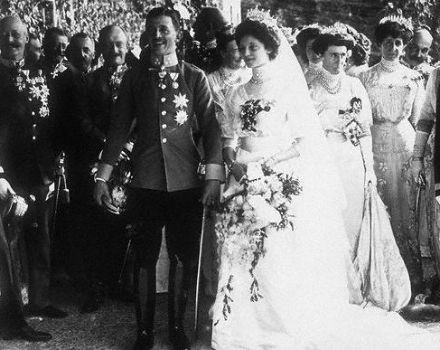
Unlike most saints, whose feast day marks the day of their earthly death, or their die natalis (birthday) in Heaven, in his case October 21 commemorates the wedding of Archduke Karl Franz Josef Ludwig Hubert Georg Maria von Habsburg-Lothringen to Princess Zita Maria delle Grazie Adelgonda Micaela Raffaela Gabriella Giuseppina Antonia Luisa Agnese of Bourbon-Parma.
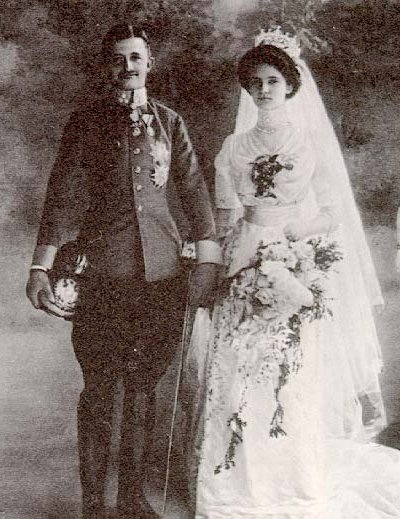
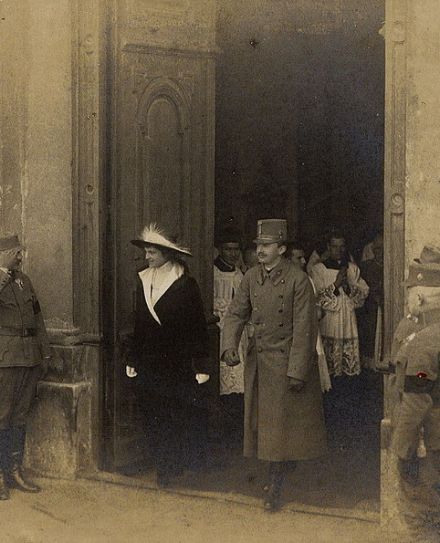
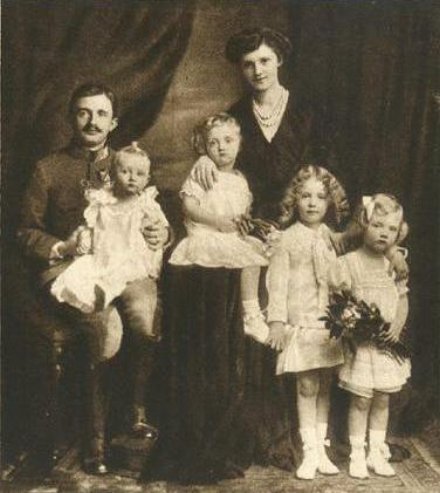
The Empress Zita was eventually to bear Karl eight children, including Crown Prince Otto (below, with the Emperor), who served for twenty years as a Member of the European Parliament for Bavaria, where he still lives in exile to this day.
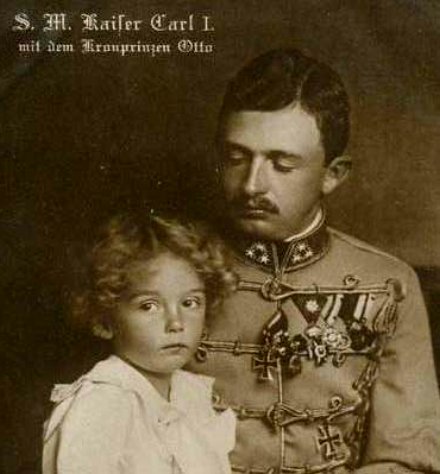
The many stories, anecdotes, and details of the life of Charles are far too numerous for us to give any suitable account to you on these pages. However, interested parties might consider reading The Last Hapsburg by Gordon Brook-Shepherd, a biography written with the close coöperation of Empress Zita before her death in 1989 and with unprecendented access to personalities involved and to archives previously unopen.
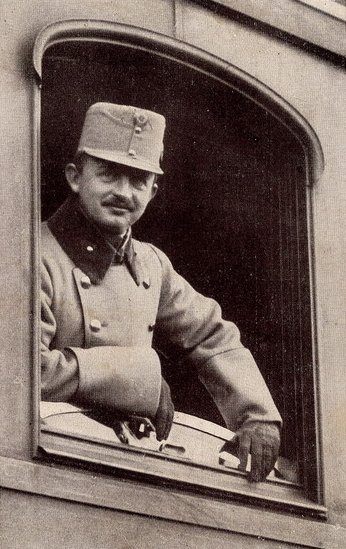
The Archdiocese of Vienna began collecting testimonials of Charles’ holiness in 1949, beginning the cause for his canonization. In 1954, he was declared Venerable. The scientifically inexplicable healing of a sick Brazilian nun in 1960 was certified as a miracle in December 2003 after the consideration of three medical experts. In October 2004 the Emperor was beatified by the late Pope John Paul II in a ceremony which brought much of the old guard of Europe to St. Peter’s Square. Born Karol Wojtyla, the late pope was named in honor of Kaiser Karl, since his father had served in the Emperor’s army.
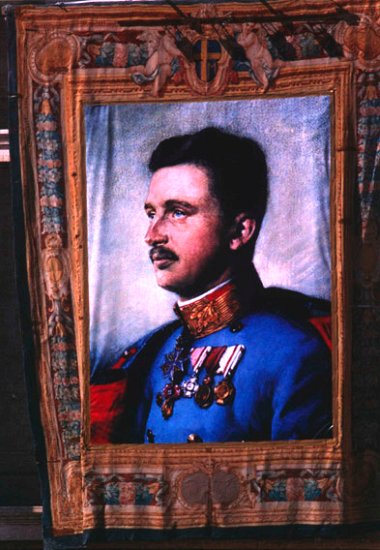
His Imperial and Royal Apostolic Majesty
Charles the First
By the Grace of God
Emperor of Austria
Apostolic King of Hungary, of this name the Fourth
King of Bohemia, Dalmatia, Croatia, Slavonia, and Galicia, Lodomeria, and Illyria; King of Jerusalem etc.
Archduke of Austria
Grand Duke of Tuscany and Cracow
Duke of Lorraine and of Salzburg, of Styria, of Carinthia, of Carniola and of the Bukovina
Grand Prince of Transylvania
Margrave of Moravia
Duke of Upper and Lower Silesia, of Modena, Parma, Piacenza and Guastalla, of Auschwitz and Zator, of Teschen, Friuli, Ragusa and Zara
Princely Count of Habsburg and Tyrol, of Kyburg, Gorizia and Gradisca
Prince of Trent and Brixen
Margrave of Upper and Lower Lusatia and in Istria
Count of Hohenems, Feldkirch, Bregenz, Sonnenberg, etc.
Lord of Trieste, of Cattaro, and in the Wendish Mark
Grand Voivode of the Voivodship of Serbia etc. etc.
Search
Instagram: @andcusack
Click here for my Instagram photos.Most Recent Posts
- Gellner’s Prague December 19, 2024
- Monsieur Bayrou December 18, 2024
- Dempsey Heiner, Art Critic December 17, 2024
- Vote AR December 16, 2024
- Articles of Note: 12 December 2024 December 12, 2024
Most Recent Comments
Book Wishlist
Monthly Archives
Categories



Beautifully done!
Karl life’s is an inspiration and encouragment for all Catholic gentlemen in these ‘evil-days’, most especially his undying love for Mary, the rosary and his unflagging confidence in God’s Holy Will and providence.
Excellent post.
Wow, they were carrying a whole lot of names between the two of them.
Why is his feast day celebrated on the day of his wedding?
Some have speculated that his wedding day was chosen as the feast because the Empress Zita might be recognized a saint as well.
The Last Hapsburg. Good suggestion. I shall get a copy from the library straight away…
Andrew:
Wonderful images!
In the list of Karl’s style and titles when the line goes etc. etc. Do you have any idea what these Ranks and Places may be? It would be very interesting to knoW!
Beautiful post. Thank you.
Excellent summary; thank you.
Pax vobis.
I’m touched by those facts.
Have you ever heard about League Of Prayer (Gebetsliga)?
+
I live some 30-40 kilometers from the Stiftskirche Muri, where Empress Zita lies buried, and Emperor Karl’s heart is entombed. While passing through on other business, I have gotten out of the train, and spent some time praying at the side-chapel where they lie. Europe has known few saintlier statesmen.
Here is a description of some of the places and titles:
By the Grace of God
Emperor of Austria
Apostolic King of Hungary,
of this name the Fourth
King of Bohemia,
Dalmatia (an area on the Adriatic now considered part of Croatia),
Croatia,
Slavonia (part of Croatia)
and Galicia, (partly in Poland , partly in the Ukraine)
Lodomeria, (a titular domain that was always added to Galicia)
and Illyria (largely Slovenia);
King of Jerusalem etc.
Archduke of Austria
Grand Duke of Tuscany and Cracow
Duke of Lorraine and of Salzburg, of Styria, (part of Austria) of Carinthia, (part of Austria) of Carniola (part of Slovenia) and of the Bukovina (an area now split between Romania and the Ukraine)
Grand Prince of Transylvania (Central and Western Romania)
Margrave of Moravia (the eastern part of the Czech Republic)
Duke of Upper and Lower Silesia (mostly part of Poland), of Modena, Parma, Piacenza and Guastalla, (all Italian cities) of Auschwitz and Zator (Polish towns), of Teschen (a town now split between Poland and the Czech Republic), Friuli (an areas historically in Austria, now part of Italy), Ragusa (Dubrovnik) and Zara (Zadar, Croatia)
Princely Count of Habsburg (a castle in Switzerland) and Tyrol, of Kyburg (another castle and former county in Switzerland), Gorizia (a county in NE Italy) and Gradisca (a castle in NE Italy)
Prince of Trent (home of the Tridentine Rite) and Brixen (a town in the Trentino)
Margrave of Upper and Lower Lusatia (a region now in Germany and Poland) and in Istria (a Croatian peninsula)
Count of Hohenems, Feldkirch, Bregenz, Sonnenberg, (counties in the Voralberg) etc.
Lord of Trieste, of Cattaro (a city in Montenegro), and in the Wendish Mark (probably an area of Sorbic-speakers in Eastern Germany)
Grand Voivode (warlord) of the Voivodship of Serbia etc. etc.
Congratulations for the beautiful site. i would like to know please from where can I buy a book about Emperor Charles von Hapsburg. thanks.
This Saint’s picture in lower basilica at Lourdes is very striking. You fail to mention that he died in poverty in exile im Madeira.
Brilliant web page on our good Blessed Emperor Karl. His grand-aunt Empress Elizabeth was most kind to the people of Ireland and I’m sure Charle’s devout Christian values were inspired by her good Christian charity.
Sincerely,
Thomas Clowe S.D.B.
Salesian of Don Bosco
Province of Saint Patrick
Eire
Is there any source for reproductions of prints or paintings of Blessed Charles?
What a beautifully done post, as was the post on King James II. I have added this excellent blog to my own blogroll and will return frequently.
Here’s is another miracle attributed to King Charles’ intercession which may gain him sainthood:
http://www.wlbz2.com/news/watercooler/article.aspx?storyid=79998
Just to think that the obtuse policies of the victors in 1919 made it possible for the likes of Karl to be followed by the likes of Hitler is truly depressing….
Super Pictures Nostalije King James
On Sunday, 21 April 2013, there will be a Traditional Latin Mass offered in honor of Blessed Karl at St. Titus Church in Aliquippa, Pennsylvania, followed by the veneration of his relic and a luncheon & conference. Full details and registration information here: http://knightsofcolumbuslatinmass.blogspot.com/2013/03/2nd-annual-blessed-karl-of-austria.html
This event is sponsored by the Knights of Columbus Woodlawn Council 2161 Traditional Latin Mass Guild.
For those who are interested, the Third Annual Blessed Karl Traditional Latin Mass, Luncheon & Conference will be held on Sunday, 6 April 2014, at St. Titus Church in Aliquippa, Pennsylvania. Details and registration info here:
http://knightsofcolumbuslatinmass.blogspot.com/2014/02/third-annual-blessed-karl-mass-luncheon.html
Sponsored by the Knights of Columbus Woodlawn Council 2161 Traditional Latin Mass Guild.